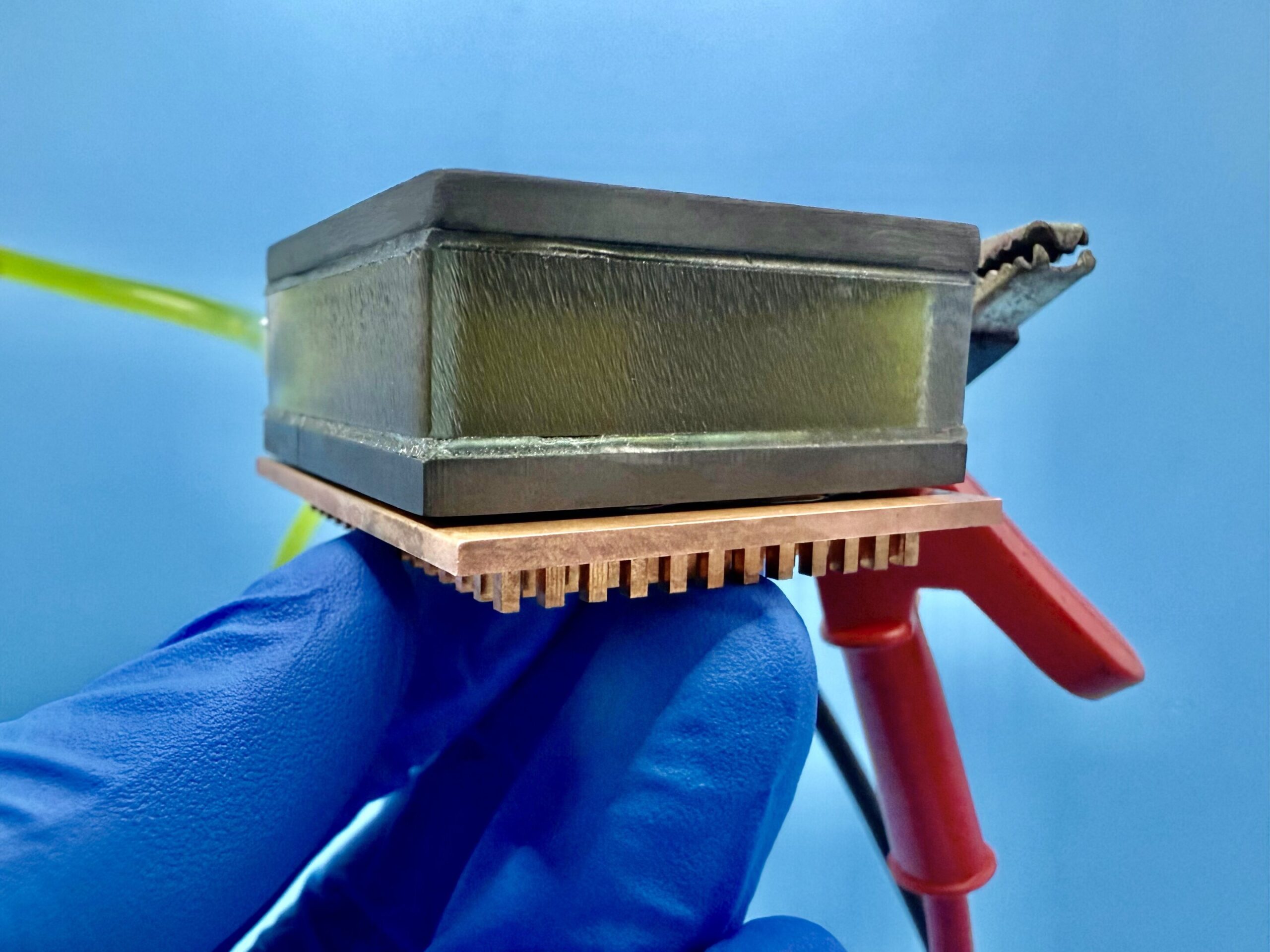On January 30, 2025, researchers made an exciting breakthrough in the field of refrigeration technology. A study published in the prestigious journal Joule details the development of a thermogalvanic refrigeration system, offering an efficient and environmentally friendly alternative to traditional cooling methods. This new technology relies on thermogalvanic cells, which produce a cooling effect through a reversible electrochemical reaction. The potential for this innovation to reshape how we approach refrigeration, from personal cooling devices to industrial applications, is immense.
What is Thermogalvanic Refrigeration?
Thermogalvanic refrigeration is a novel approach to cooling that differs significantly from conventional systems. Unlike traditional refrigeration methods, which often rely on energy-intensive compressors and refrigerants with harmful environmental impacts, thermogalvanic cells operate with much lower energy inputs, making them both cost-effective and environmentally friendly. This technique harnesses the power of reversible electrochemical reactions to produce cooling effects, a process that has the potential to revolutionize how we think about energy-efficient cooling.
Senior author Jiangjiang Duan from Huazhong University of Science and Technology in Wuhan, China, emphasizes the importance of this emerging technology. According to Duan, thermogalvanic technology could soon be integrated into everyday life, offering solutions for clean electricity generation as well as low-power cooling. His statement suggests that both the research community and commercial industries should be keenly aware of its potential.
How Does Thermogalvanic Cooling Work?
The basic principle behind thermogalvanic refrigeration involves electrochemical reactions that occur within thermogalvanic cells. These reactions convert chemical energy into electrical power through heat. Essentially, the technology capitalizes on the thermodynamic principles at play in electrochemical reactions, where the direction of the reaction (whether it is forward or reverse) can either absorb or release heat.
At the heart of the system are redox reactions involving iron ions in solution. In these reactions, iron ions undergo two primary phases:
- In the first phase, iron ions (Fe³⁺) lose an electron and absorb heat (Fe³⁺ → Fe²⁺).
- In the second phase, the iron ions gain an electron and release heat (Fe²⁺ → Fe³⁺).
The power generated during the first phase, when heat is absorbed, cools the surrounding electrolyte solution. The heat generated during the second phase is removed via a heat sink. This cycle results in cooling power, which can then be harnessed for practical use.
Dramatic Improvements: Boosting Cooling Efficiency
The breakthrough from Duan’s team lies in the optimization of the chemicals used in the thermogalvanic process. Prior studies on thermogalvanic cells had demonstrated the potential for cooling but had been limited by the efficiency and scalability of the systems. To overcome these limitations, Duan’s team focused on improving the electrolytes used in the cells, leading to significant improvements in the cooling performance.
Previous research had mostly concentrated on designing the system itself or simulating the cooling process numerically. Duan’s research team, however, employed a rational and universal design strategy to optimize the electrolytes—the critical solution that enables the electrochemical reactions to occur. Their approach resulted in a record-high cooling performance that holds potential for real-world applications, marking a significant leap forward in thermogalvanic technology.
Key Innovations in Electrolyte Design
The researchers’ breakthrough involved tweaking the chemical composition of the electrolytes in the thermogalvanic cells. By selecting specific solutes and solvents, they significantly improved the cooling capacity of the cells. The new electrolyte design utilized a hydrated iron salt containing perchlorate. This specific formulation allowed the iron ions to dissolve and dissociate more freely compared to previous iron-containing salts like ferricyanide, which had been tested in earlier systems.
One of the most impressive modifications was the decision to dissolve the iron salts in a solvent containing nitriles rather than pure water. This change improved the cooling power of the thermogalvanic system by a remarkable 70%. This improvement led to a drastic increase in the system’s overall performance, enabling the cooling thermodynamic cells to lower the temperature of the surrounding electrolyte solution by 1.42 K.
In comparison, earlier thermogalvanic systems had been able to cool the electrolyte by only about 0.1 K. This represents a 14-fold improvement in cooling capacity, demonstrating the immense potential for these systems in practical applications.
Future Potential and Commercial Applications
While the research team has achieved impressive results, they acknowledge that further optimization is still required. The goal now is to refine the system for scalability, stability, and commercial viability. Duan and his team are focused on improving the design at the system level, exploring new mechanisms, and incorporating advanced materials to continually enhance the thermogalvanic cooling performance.
The research team’s work opens up numerous potential commercial applications. As the technology evolves, it could be used in everything from personal cooling devices like wearable air conditioners to large-scale industrial refrigeration systems. The fact that the system requires lower energy inputs and fewer harmful chemicals than conventional cooling methods makes it an attractive option for industries looking to reduce energy costs and minimize environmental impact.
Furthermore, Duan’s team is actively working on developing diverse prototypes that can be tested in a range of real-world scenarios. By collaborating with innovative companies and industry leaders, they aim to bring thermogalvanic technologies to the market and begin large-scale commercialization.
Conclusion: A New Era of Cooling Technology
The discovery and optimization of thermogalvanic refrigeration is poised to reshape the future of cooling technology. This breakthrough not only promises to offer a more energy-efficient and eco-friendly solution to refrigeration but also lays the foundation for scalable cooling systems that could be used in a variety of fields—from everyday consumer products to large industrial applications.
As researchers like Jiangjiang Duan continue to refine their designs and explore new applications for thermogalvanic cells, we may soon see this technology become a common fixture in our lives. By harnessing the power of reversible electrochemical reactions, this innovative approach to cooling could help address some of the most pressing challenges in energy consumption, sustainability, and climate change.
Reference: Solvation entropy engineering of thermogalvanic electrolytes for efficient electrochemical refrigeration, Joule (2025). DOI: 10.1016/j.joule.2025.101822. www.cell.com/joule/fulltext/S2542-4351(25)00003-0
